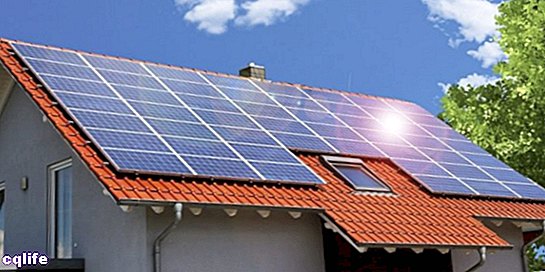We explain what energy is, what are the different types that we can find and some examples of each type.

What is energy?
Energy is the capacity of a force to generate an action or ajob. The term comes from the Greek word energetic, which means "activity", and is used in various areas of the knowledge how are the physical and thechemistry. Any force that does work on an object will cause an energy change in it.
There is a fundamental principle in physics known as the principle of conservation of energy, which states that energy cannot be created or destroyed but can only be transformed. For example, an object that falls from a certain height with an initial velocity equal to zero, transforms all its gravitational potential energy into Kinetic energy as it gains speed as it approaches the ground. The principle of conservation of energy governs absolutely all physical phenomena, from the fall of an object to the formation of a star.
Energy can also be stored to be used when required. For example batteries or batteries are elements that store chemical energy and transform it into electric power. Even theliving beings They store energy through what we know as “fat” (lipids) or sugars. Through various processes, the body transforms the chemical energy of these substances into other types, such as caloric energy necessary to maintain body temperature.
It can serve you:Geothermal energy
Types of energy

There are various forms of energy, of which we can highlight the following:
- Kinetic energy. It is the energy possessed by the bodies that are in movement, which have a speed. If an object is wanted, its kinetic energy is zero.
- Potential energy. It is the energy contained in a physical system or in an object and that can then be transformed into other forms of energy (such as kinetic, caloric, etc). It is energy "in power".
- Electric power. It is the energy that exists in the presence of electrically charged particles. The most common type of particle is electron, which produces an electric potential around it. When other electrons move through this potential, they acquire electrical energy. What we know as electric current it is a large number of electrons moving through a potential difference.
- Magnetic energy. It is the energy generated by electric currents and magnetized materials (magnets)
- Wind power. It is the energy produced by the force of the wind.
- Solar energy. It is the energy emitted by the Sun in the form of heat and light radiation through space to the planets of Solar system.
- Atomic or nuclear energy. It is the energy that comes from the forces that hold together the subatomic particles: strong and weak nuclear forces. This is also the name given to the electrical energy obtained from the heat released by atomic fusion or fission reactions in a nuclear power plant.
- Chemical energy. It is the energy that intervenes in atomic bonds and reactions at the molecular level, essential for thelifeas it keeps themetabolism of living beings.
- Heat or thermal energy. It is the energy that occurs with energy transfers caused by temperature differences. Temperature, in turn, is a measure of the kinetic energy of the molecules that make up a body.
- Hydraulic energy. It is the energy obtained from the movement of large bodies of water, such as rivers, tides or waterfalls. Electric dams run on hydraulic power.
- Light energy. It is the electromagnetic energy produced by electromagnetic waves in the visible range (that is, the light).
- Sound energy. It is the energy produced by the waves of the sound.
Examples of energy
The presence of energy is easily verifiable in everyday examples:
- Electric power. An electrical discharge occurs when lightning strikes the ground, emitting radiation visible to the naked eye and scorching the I usually.
- Kinetic energy. When we are in a moving car and the driver suddenly applies the brakes, we can feel the push of the kinetic energy that we brought in our body. A car with a mass m that moves at 90 km per hour has a kinectic energy that is very easy to calculate: Ec: ½ * m * v2
- Solar energy. Plants convert solar energy into chemical energy through photosynthesis.
- Caloric energy. Approaching the hands to a heater, we will feel the air hot on the skin.
- Magnetic energy. The magnets stick to our refrigerator door.
